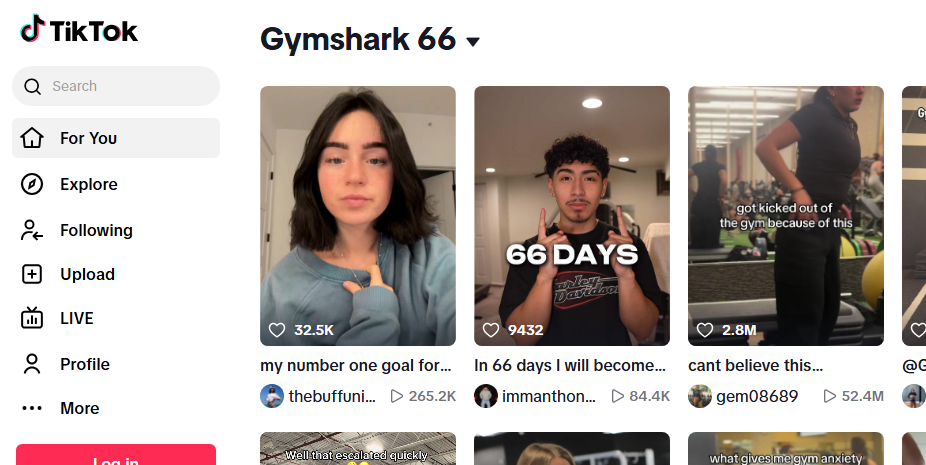
You’re ready to shoot that brand video. You’ve got the vision. The energy. The CEO’s blessing. But then, you start collecting quotes from Chicago video production companies, and suddenly it feels like you’re ordering a latte and being charged for the whole coffee farm.
Why is one crew quoting $2K and another $20K for the same 60 seconds? You start to wonder if you’re missing something (Well, you probably are, and it’s called understanding how production pricing works.)
The thing is, Chicago is a creative goldmine, but not all video projects are created equal, and definitely not priced that way.
From the number of camera setups to whether your shoot requires a drone, a dolly, or just a dude named Dan with a tripod, every detail stacks into your final bill. Let’s break down the nitty gritty and show you how to budget smart.
Chicago is a place where you could walk out with a slick 60‑second promo for $15K–$50K, or a cinematic commercial north of $50K. But don’t panic, mini-productions exist, too.
A bare‑bones talking‑head or testimonial can start around $1.2K–$2.5K, with most basic projects landing near $5K.
If you’re opting for hourly builders, expect to budget $30–$100/hr for camera gear, $65–$180/hr for editing, and $30–$405/hr for crew roles from directors to voice‑over artists.
Then there’s the “hidden orchestra” contributing to your masterpiece: B‑roll, motion graphics, music rights, each inflating costs by 10–50% or hundreds to thousands of dollars.
So yes, your Chicago video project could cost anywhere from $2K for a lean social clip to $100K+ for a solid commercial.
There’s no one-size-fits-all price tag when it comes to video production, especially in a city like Chicago, where talent and tools vary wildly. One client’s $3K testimonial shoot is another’s $80K commercial saga.
So what gives? Why does one quote sound like a bargain and the other like a small mortgage? The truth is, video pricing is layered. Every scene and soundbite stacks onto your final cost. And knowing which elements make the difference is important.
Here’s the truth most clients don’t hear up front: besides the camera gear, your budget is paying for brains. The deeper the concept, the deeper the cost.
If your video is “just someone saying a thing,” that’s a low-lift project. Script, camera, editing, and done.
But if you want to tell a story that hooks people and moves them, now you need storytellers. Creative development. Mood boards. Location scouts. A producer who knows how to wrangle chaos and a director who can squeeze emotion from a single blink.
It’s the difference between a talking head in front of a wall... and a 90-second film that feels like a Netflix trailer.
So before you ask “why is this so expensive?”, ask yourself this: Are we just making noise… or are we saying something worth watching?
That answer alone can swing your cost by tens of thousands.
Need a simple interview? You might get away with a one-person crew and a DSLR.
But want movement, drama, beauty shots, lighting that makes your CEO look like they sleep 8 hours a night? Now, you’re hiring a DP, camera assistant, gaffer, audio tech, and maybe a grip or two just to move lights and block reflections off that glass table no one thought about.
Then there’s the gear: Are we talking iPhone or RED Komodo? One light or a full lighting kit? Steadicam or handheld?
The more ambitious your visuals, the more bodies and toys show up, and every one of them charges by the day.
Shooting in Chicago? Great choice…until the city starts charging you for the air you breathe. Okay, not literally, but close.
The moment your shoot leaves the safety of a studio and hits the streets, you're entering the land of permits, parking logistics, and “Ma’am, you can’t film here without permission.”
Want that iconic skyline in your shot? That might mean filing with the Chicago Film Office, blocking off sidewalks, coordinating with building managers, and even hiring off-duty cops for crowd control.
Even indoor shoots aren’t immune. Some venues charge location fees or restrict shooting hours. And if your “quick shot by the lake” involves a drone? Get ready for FAA rules and flight permits.
Every city has quirks, but Chicago has personality, and that personality shows up in your invoice if you’re not careful.
Yes, your cousin technically acted in a college play once. No, that doesn’t mean they should be the face of your brand.
Great talent knows how to deliver lines without sounding like they’re reading from a teleprompter held hostage. They understand tone, timing, eye contact, and micro-expressions. The kind of stuff that makes viewers believe what they’re hearing.
And guess what? That skill costs money.
Rates vary — local actors might charge $200–$800/day, while union talent or recognizable faces can run you $2K–$10K+ just to show up (plus usage rights, which is a whole other budget beast).
Want a voiceover? Same deal. Price depends on the experience, the reach, and how long you want their voice floating around the internet with your logo attached.
Remember, talent can take your entire production to the next level or sink it. Invest accordingly.
Here’s where things go from “that’s nice” to “holy crap, this looks legit.”
Adding motion graphics (think animated logos, kinetic text, slick transitions) can take your video from a PowerPoint with music to something that actually holds attention. But guess what? Those animations don’t just magically appear.
Motion design is an art form. It requires designers who know how to move pixels with purpose, and software that doesn’t crash when exporting a 4K sequence at 2 a.m.
Want light animation? That’s one budget. Want an entire explainer video with custom characters, fluid transitions, and visuals that dance with your voiceover? That’s another budget entirely.
Static graphics (like name tags or simple overlays), on the other hand, are much easier on the wallet. But if you’re aiming for high-impact visuals, animated elements are your best friend.
So, ask yourself: do we need sizzle... or are we okay with still?
Editing is where your footage becomes the story…or a very expensive mess.
Light editing means trimming clips, syncing audio, maybe tossing in a logo and a royalty-free track that doesn’t sound like elevator jazz. That’s your basic package with quick turnaround and minimal revisions. Besides, it’s budget-friendly.
But if you want cinematic pacing, color grading that doesn’t make everyone look like they’re lit by a fridge, and sound design that feels like something’s at stake, you’re stepping into deep-edit territory where an editor becomes a storyteller and an artist.
Deep edits take time. The more feedback rounds, motion layers, transitions, and nitpicky frame-tweaks you request, the deeper the rabbit hole (and invoice) goes.
So, before you ask “Can we just tweak one more thing?”, know that every “quick fix” adds up in hours and dollars.
You don’t need the biggest crew or a Hollywood-sized invoice to make something great. All you need is a strategy.
Let’s walk through the tactics that’ll help you stay within budget without ending up with a video that looks like it was filmed on your intern’s lunch break.
Look, we get it. You want the drone, the dolly, the six-camera setup, custom animation, a voiceover from Morgan Freeman, and a golden-hour skyline shot that makes Chicago look like a dream sequence.
But here’s the reality check: not everything moves the needle. Some things just… move the budget.
Want a smart video? Start by asking: What actually helps us connect? Convert? Get remembered? If a killer opening shot and a tight 30-second script do the job, do you really need two days of B-roll at four locations? Probably not.
Remember, every extra ask comes with a cost. So budget like a strategist, not a maximalist. Ideally, focus on the 20% of elements that create 80% of the impact.
You don’t need to reinvent the wheel for every platform.
One shoot can yield way more than one video. That 60-second brand film? Clip it into 15-second Instagram teasers, behind-the-scenes TikToks, or a bite-sized YouTube pre-roll.
Got a solid interview? Pull out quotes for reels or email content.
Shooting with this mindset from the start lets you stretch your footage across touchpoints without rebooking the whole crew next month.
So when you’re budgeting, think beyond one video. Ask your production team how to shoot with multi-format use in mind. This way, you’ll spend once and publish often.
Take a page from Gymshark’s book. In their #Gymshark66 habit-building challenge, the brand shot a full campaign video featuring athletes and trainers. Then, they smartly repurposed that footage into multiple platforms (Insta Reels, TikTok Challenges, YouTube Shorts, and more).

The smartest way to save without sacrificing quality is by bringing your production partner in early, like before-you-even-write-the-brief early. Why? Because they’ve done this before. They know what looks expensive but isn’t, and what sounds simple but costs as much as a car.
You might be dreaming up five locations, three actors, and a voiceover in Spanish… when a single-location shoot with a clever edit could do the job better (and cheaper).
Creative input at the start = fewer painful compromises later.
Besides, early collaboration also avoids the dreaded “budget bloat,” where you start stripping back good ideas just to survive the quote. With producers in the room early, you design for the budget and the impact.
If your quote just says “video production — $10,000,” that’s not a quote.
You have every right to know where your money’s going. Ask for an itemized breakdown. What’s the crew cost? How many hours of editing are included? Is that gear rental for one day or two? Is color grading even part of this, or are you just getting the raw footage with vibes?
When you have clear line items, two beautiful things happen:
Transparent estimates also build trust. No one wants to feel like they’re getting bamboozled with vague charges that sound like made-up buzzwords (“Creative Direction Sync Fee”... what even is that?).
So ask questions. Get clarity. Because in video production, what you don’t see in the budget can absolutely cost you.
Your first edit won’t be perfect, and that’s a part of the process.
Revisions are normal, but they’re also not free. Every “Can we swap that shot?” or “What if we try a different music track?” takes time, and time means someone’s burning hours in an edit bay with your logo on their screen.
Smart clients budget for the back-and-forth. Most production companies include one or two rounds of revisions in the base cost. After that? You’re in invoice territory.
So, plan ahead. Be decisive. Get internal approvals before sending notes. Don’t use your editor as a test lab for internal politics.
.gif)
If your brain hurts a little after reading all this, it means you care about doing it right. Video production costs in Chicago aren’t black and white.
They live in the grey, where creativity, logistics, and budget all wrestle for control. And trust us, it’s way better to navigate that mess with someone who actually knows where the landmines are.
That’s where INDIRAP comes in. We help brands tell stories that work and make financial sense. Our work involves scroll-stopping content backed by numbers and intent.
So if you’re ready to build something bold without getting lost in budget hell, let’s talk. Book a free, no-obligation Discovery Call today and we will show you exactly what to invest in (and what to skip) so you end up with results-driven videos.